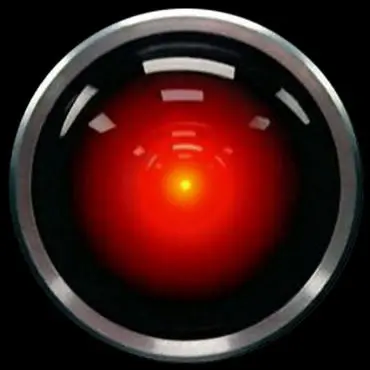Game-key cards are different from regular game cards, because they don’t contain the full game data. Instead, the game-key card is your “key” to downloading the full game to your system via the internet.
Pay a premium for a physical copy of your game, and the cartridge may not contain the actual game. Only on Nintendo Switch 2.
Not that I agree with it, but isn’t this what other consoles have done for about a decade already?
Physical media for games is on its deathbed.
Yes/No. Both Sony and Microsoft have quality control processes to ensure that whatever is published is going to play on first entry of the disc.
That said, publishers use A LOT of workarounds. Day 1 patches to “finish” the game. Download code inserts. And as of recent, mandatory online server check-ins. As far as I’m aware, Nintendo is the only one who allows publishing half the product with required download.
Seems so. Notably, Switch 1 already has games with a similar warning on the box.
They’re just giving a name to it.
On one hand, I’m glad they’re up front about it (and I’d rather see an even uglier, larger warning on the cover for game key cards). On the other, I hope this isn’t a sign that they’re legitimizing it or that it’ll be more common.
Yep. The slight difference is that those Switch games typically included a chunk of the game in the cart and sometimes were partially playable. Short of requiring a smaller download, though, it was the same practical function.
I still don’t like it, but those carts get prohibitively expensive at high sizes.
As someone with two kids who play games on the switch, physical carts keep me from having to buy every game two or three times.
So losing the ability to buy a game and share it between three switches will severely increase the costs of games for me.
Nintendo made a huge deal about virtual game cards, saving us from exactly what you’re afraid of.
Not as good as what Sony and Microsoft do, where we can essentially install our whole library on every console we have, but it’s about as good as what Steam does.
Plus they’re bringing back a “game share” like feature, so some multiplayer games should be playable in a local family with only one purchase.
but it’s about as good as what Steam does.
Explain, since I don’t think that’s true.
Steam sells non-transferable lifetime licenses to each game you “buy”, that let you play it on one PC at a time but never transfer it to anyone else, even as part of an inheritance after your death.
If you have a family there is a “sharing” plan which allows you to let family members also play some of the games in your library, but not at the same time.
Nintendo is imposing a bit more ceremony if you want to share digital games each time you share them, but the essential “one device at a time” nature is the same that steam imposes.
I think you can argue if Steam does the whole sharing thing better than Sony or Microsoft. On Playstation and Xbox you can just by one copy of a game, but play it simultaniously with someone else, but it seems like that’s limited to one other console (setting the home console).
On Steam you need one copy for every accout playing the game, but you can have 6 accounts in your family, and unlimited devices. Without family share, your own account can only play on one device at a time, but then, why not just make a new Steam account and join a family.
The virtual game cards from Nintendo are also like Steam, since they need one game copy for each player, but also only on one device.
Seems to me like Nintendo is not as good as the others, when it comes to sharing digital games. Sharing physical is of course still possible and easy on console.
Yeah, it definitely puts their overhaul of digital game sharing in perspective. They are ABSOLUTELY shifting to digital. I wouldn’t be surprised if the Switch 2 Lite had no cartridge slot at all.
That said, their idea here seems to be that you have a physical cart with a game license in it so you can download the game on multiple consoles and then just swap the key around. That is not a new idea, but it goes to show how frustrated by the limitations of having to ship flash memory with every game they are.
More like, they’ve never been known to pass the savings to the consumer on the digital front. Some games were more expensive on the e shop than physical copies from time to time iirc.
That was less a Nintendo thing than a retailer thing. Retailers didn’t take kindly to being undercut, first parties got to keep more of the revenue, so there was literally no incentive anywhere to make digital cheaper.
But let’s be clear, everybody involved except for the retailer made a lot less for a physical copy in that scenario. The real thing that changed here is Nintendo isn’t afraid of not having shelf space anymore.
And while key-in-cart means retailers still keep a cut, storage costs on Switch cartridges are HUGE, so there’s still an incentive to get users to subsidize storage.
Physical games weren’t cheaper at MSRP, but retailers were known to put them on sale or lower their price permanently more frequently than Nintendo’s eShop.
deleted by creator
Can you download a game on the same account to two switches and play them at the same time?
deleted by creator
It’s actually not “only on the Switch 2”. There were a bunch of Switch one games that only came with a partial set of assets and required a mandatory download to be played.
It sucks, and it’s what you get when your physical storage is too expensive and too small, unfortunately.
Now you’ve got me curious what capacity a UMD form factor could achieve with a UHD Blu-ray laser.
Good question. What was the UMD, 1GB? From the DVD default, which was 4GB single layer and 8 dual layer? Blurays are 25GB single layer,so 25% of that is like 7gigs, which is still smaller than the 16gigs the larger Switch carts were. But hey, a lot of games on Switch were smaller, dual layer discs would get you almost to the same size and be a fraction of the cost.
Well, the discs would be. I have no idea how much the weird plastic caddy on UMDs pushed the price up.
I always thought UHD used a different laser than standard blu-ray, but only just found out it was a trick of h265 encoding and triple layer discs.
Based on the mini-BD format, assuming triple layer, the upper limit would have been around 24GB.
Oh, I missed the UHD bit, right. Triple layer it’d cap at 20-25, yeah. Technically Switch carts were available up to 32GB, but I think like one or two games ever used that much, they were so expensive. That’s where the partial download stuff comes in.
Of course for optical media the solution was always to ship multiple discs, because the smaller discs are so cheap. Or were. With most optical media manufacturing phased out who knows how expensive optical will become.
Storage is cheap. Others are being cheap too.
For that I in part understand the switch module price if that’s indeed nvme speed or something.
But switch 1? Not really.
It was, though.
Objectively. This is not an opinion.
Switch 1 carts HAD to be purchased from Nintendo. It wasn’t an off the shelf part. They weren´t SD cards priced commercially, they were a specific order that was part of manufacturing a physical copy and stacked up on top of printing labels and paperwork, making cases, shipping them to stores and so on. Margins for physical media are garbage as it is, but Switch carts were significantly more expensive than, say, a PS5 BluRay and they crucially ramped up quickly with size.
Technically the carts were available to higher sizes, but there’s a reason you very rarely saw any Switch 1 games with cart sizes bigger than 16 gigs. Basically the more stuff you put in your game the more expensive it was to physically make the boxed copies. Crucially, that is a cost you had to pay whether you sold the carts or not. It was a manufacturing cost.
Look, at this point it’s hardly worth it trying to wrap one’s head around industrial retailed boxed copy software manufacturing, but trust me, physical Switch games were relatively and absolutely expensive to make in an environment where digital distribution was king and the next most expensive version was dirt cheap optical media.
I know. But then Nintendo was making a buck and someone else was being cheap by either not taking the bigger module (to maximize profits) or not optimizing their game sizes like Nintendo often excels at.
I think we’re on the same page but just having different thoughts details in this.
Apologies for maybe answering provocatively basically in the direction of rampant capitalism while agreeing hence triggering your effortful answer of things I know and agree on.
I don’t know that Nintendo was forcing the issue for profit. I also don’t know the costs and margins (if any) for Nintendo or who they were working with to get the storage, to be fair. But I have to assume that if Nintendo had signficantly cheaper access to storage and was artificially throttling to everybody else you’d have seen more first party games on larger carts, and that wasn’t necessarily the case.
Regardless, any solid state storage was always going to be more expensive than optical storage and scale up with size gradually in a way that optical storage doesn’t (until you have to go to a second disk or an additional layer, at least). Cartridges are just inherently riskier and more expensive, even at the relatively modest spec of the Switch 1. Definitely with what seems like competitive speeds in Switch 2.
That doesn’t mean one has to like the consequences of it. At the same time I’m not sure I can imagine a realistic alternative for a portable. We’re not doing UMD again, so…
The point about Nintendo not having significantly larger sizes on games could be attributed to a few things:
- Their developers were sometimes exclusively making Nintendo games = more familiar with the hardware and how to use it effectively
- They were guaranteed to sell a few million copies of a game = they could afford to run the numbers on refactoring the games resources and asset logic to maximize cartridge size and still come up on top. With the scale of sales, this could cover a specialized developer exclusively optimizing techniques to save on that front
- Many third party studios run their games through some converter and fix what’s remaining, the result are turd sized and non-optimized executables. E.g.: see iOS and Android app and game install sizes.
One of the things I really like about the Switch is that I can actually buy a whole physical game that doesn’t need an Internet connection. Sure, I have to check a website first, but I can at least curate my wishlist with games that are complete on cart.
At least them giving it a new name makes choosing games easier, I guess.
There will still be normal cart. With a day one patch or not.
If this is going to be what Switch 2 offers, I’m fully out
Edit: I checked with a friend. Normal game cartridges are still a thing. One thing that makes them slightly better than digital downloads (albeit still imperfect) is that you can at least trade, sell, and buy them used. Not as good as physical media, but slightly better ownership rights than buying a digital copy.
I don’t like the idea of a game that can’t be played long after the servers have gone down.
But I’m glad that it can still be traded or sold after purchase unlike what Xbox tried to do.
Not only on Switch 2. There was at least one Tony Hawk Pro Skater game that did this.
If I remember the episode of Guru Larry, the developer noticed their rights to the IP were set to expire, so they went to shit out one last game as fast as possible. They had to get the game published by a certain date, as in discs on store shelves by this date. The game was not going to be ready in time, so they put the tutorial level on the disc to print and distribute it while they finished the game, which would then be a multi-gigabyte download. Meaning that a physical copy of the game is worthless once the servers shut down.
So these physical copies will only cost $5, right? Lol.
“We want to kill physical game sales forever and we aren’t hiding it anymore.” - Nintendo, 2025
Actually from the prices I’ve seen online they are about 5 /10 dollars more than digital versions.
So they essentially stuffed a download code into a physical cartridge to make people feel like they are getting something?
Isn’t that needless and wasteful? Isn’t it also going to trick unsuspecting people into buying something they think is a physical version of a game but isn’t?
Nintendo’s site says the cartridge must always be inserted in order to play the game, and so it is the cartridge that controls the game license.
On that basis it seems likely you could sell/give the cartridge to someone else, after which they can play it and you no longer can - they’d just also have to download it first.
Until the download servers go down and you have a cartridge that’s just ewaste
Yes, which is a big part of why, despite allowing transfers, it still sucks.
Thank you for the clarification!
I still don’t like it.
Me neither. It’s basically a download game but with physical DRM in the form of a cartridge. The age of genuine physical game ownership is toast.
They’ve been doing that for decades now. Lots of PC games had a box and CD, but the only thing on it was a stub installer to run Steam. Or even if it had the full game, you’d have to download a giant day-one patch to fix all the bugs fixed between the image going gold and the actual release day.
Nothing new here. PS3 games were famous for requiring an install from the optical media to the internal drive first, and then also downloading some mandatory major update before running. The role of the physical media was mostly symbolic.
They better have a proper label / sticker there.
For collectors, and resell value compared to a paper with a code.
One thing I don’t see people mentioning is that Nintendo Switch 1 game cartridges had 32gb of storage. We don’t know about regular Switch 2 cartridge storages, but they’ve already announced games like Elden Ring and Hogwarts Legacy that are much bigger than that. Add in the fact that Switch 2 promises games in 4k (when docked) and there’s a very decent chance that these game-key cartridges exist because some games wouldn’t fit in cartridges and would otherwise have to be digital-only or not be on this console at all.
I don’t think there is anything stopping nintendo from making 64GB or larger cartridges except the cost.
Had a scare when first hearing this. But somewhere else on the site it does specify this as something like “some physical games”, and as quoted in OP they’re contrasting here with “regular game cards”. So it looks like real game cards will still be a thing.
So far I’ve seen screenshots of SFVI and Bravely Default boxarts marked as game-key cards.
I’ve seen box shots for Mario Kart and Donkey Kong that appear to be normal game cards.
At least there’s marking on the packaging so you’d know which ones to avoid getting.
Not much different from these now day that have only a code.
Did not buy and went to the e-shop.
Oh gross, that’s enough to end the retro market entirely. When the Switch 2 retires, the entire used game trade goes with it.
You know, unless hShop picks it up.
Fuck you Nintendo. Because if you lose or damaged the game card, making it unreadable by the card slot, you won’t be able to play the game. Due to the game card having the license that allows you to play the game. You’ll own nothing and you’ll like it, gamer.
That’s a really dumb take. That’s just the downside of physical media.
The real problem of this is just the same as the digital games. Once the Nintendo switch store inevitably goes offline like the Wii and 3DS, your key card becomes useless e-waste no matter how good you care for it.
Question. Did you open OPs link? Because all you’re doing is buying a license on cartridge. You have to download the game and you need to insert the cartridge to play the game. Nintendo managed to figure out a way to add all the inconveniences of physical media to digital only games.
Yes, and did you read wha ti said?.. I agree with what you just said. The positive of physical card is that you can lend them. I still think it’s a horrible product, and I’m afraid this will be the end of physical games.
That’s a really dumb take.
I agree with what you just said.
🤔
The dumb take is that this is a bad idea because you might damage the card. That’s silly because that’s just the trade off of portability.
Isn’t that how all physical media works?
No. You have to download the game and need the cartridge to play it.
It’s not unheard of, though. Modern Warfare 2 had only a 70MB file on its disc, basically a license, and required you to download the actual game.
Note I’m not defending this. It’s a nightmare for game preservation and pushes us ever further in the direction of never owning anything. I’m just saying Nintendo isn’t breaking new ground with this particular outrage.
People are referring to damaged physical media = can’t play it. That’s always been the case. You mixed 2 different things into the same point, which are wildly distinct and why people say they agree partially.
Many Ubisoft games and Activision games on the Switch 1 were sold like this.
Switch cards hold a maximum of 32GB, maybe that’s why? Although it seems no excuse for Switch 2, given it’s a whole new generation, why not support larger cards? I mean you can buy a 256GB microSD for $15, and that’s a private individual buying one; at scale, the memory can’t be too expensive…
But the Switch cards are not MicroSD cards. MicroSD cards are produced at much larger scales than Switch game cards. And there are many manufacturers producing the MicroSDs. That’s why MicroSD cards are so cheap because there is competition. While the game cards are a bespoke design using non-standard flash memory and only produced by Nintendo’s partners in lower numbers than MicroSD cards. I heard from a publisher that they had to pay $8 per unit for the 16GB card when they released a small indie game for the Switch 1. That was almost the price of the digital version. So they had to charge double for the retail version. The Switch cards are relatively expensive that’s why many publishers opted for a small card and forced the consumer to download the rest even when the game could fit on the bigger card. And Nintendo still takes a royalty for every game sold on top of that.
But even if a publisher could buy a 256GB Switch card for $10 bucks that is money not going into the publishers pocket. So of course a publisher like Activision will opt for the smallest card possible so they can earn a couple of bucks more per game sold.











